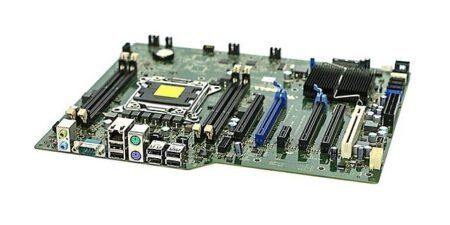
Your motherboard is the unsung hero of your computer. It’s the crucial component that connects all the other parts, from the CPU to your RAM, graphics card, and storage drives. Knowing your motherboard model is essential for troubleshooting, upgrading, and optimizing your PC’s performance. Let’s dive in and discover how to identify this vital component.
Understanding the Motherboard
Before we get into the nitty-gritty of identification, let’s briefly understand what a motherboard is and why it matters.
- What is a Motherboard? Think of it as the backbone of your computer. It’s a large printed circuit board (PCB) with various slots and connectors for different components.
- The Functions of a Motherboard: It provides power and data connections for the CPU, RAM, graphics card, storage devices, and other peripherals. It also houses the BIOS (Basic Input/Output System), which is essential for booting up your computer.
Methods to Identify Your Motherboard
There are several ways to determine your motherboard model:
- Checking in Windows:
- System Information: Press Win + R, type “msinfo32,” and look for “BaseBoard Product” and “BaseBoard Manufacturer.”
- Command Prompt: Open Command Prompt as administrator and type “wmic baseboard get product,manufacturer.”
- Using Third-Party Software: Tools like CPU-Z can provide detailed hardware information, including your motherboard model.
- Physical Inspection: If you’re comfortable opening your PC case, you can find the model number directly on the motherboard.
BIOS and Firmware Updates
Keeping your motherboard’s BIOS (Basic Input/Output System) up-to-date is crucial for optimal performance and compatibility. Updating BIOS can be tricky, so follow the manufacturer’s instructions carefully. Popular motherboard brands like ASUS, MSI, and Gigabyte have their own update procedures.
When and Why You Should Know Your Motherboard Model
Understanding your motherboard model is beneficial in various situations:
- Troubleshooting Issues: Knowing your motherboard helps identify compatibility problems and find appropriate solutions.
- Upgrading Components: It ensures that new hardware is compatible with your system.
- Overclocking: Some motherboards are designed for overclocking, while others are not. Knowing your model helps you determine your options.
Common Questions About Motherboards
- How Long Do Motherboards Last? Typically, motherboards can last several years with proper care. However, technological advancements may make them obsolete over time.
- How to Tell If Your Motherboard is Dead? Symptoms include no power, no display, or frequent system crashes.
- Choosing the Right Motherboard for Gaming: Consider factors like CPU socket compatibility, RAM support, number of PCIe slots, and overclocking capabilities.
Additional Tips
- Cleaning and Maintenance: Regularly clean your motherboard with compressed air to prevent dust buildup.
- Understanding Form Factors: Familiarize yourself with different motherboard form factors like ATX, Micro-ATX, and Mini-ITX to choose the right case.
Knowing your motherboard model is a fundamental step in computer ownership. By understanding its role and how to identify it, you can troubleshoot problems effectively, upgrade components confidently, and optimize your PC’s performance.
Do you have any specific questions about your motherboard or need help identifying it? Feel free to share more details in the comments below!
Keywords: motherboard, identify motherboard, computer hardware, BIOS, upgrade, troubleshooting, PC maintenance






